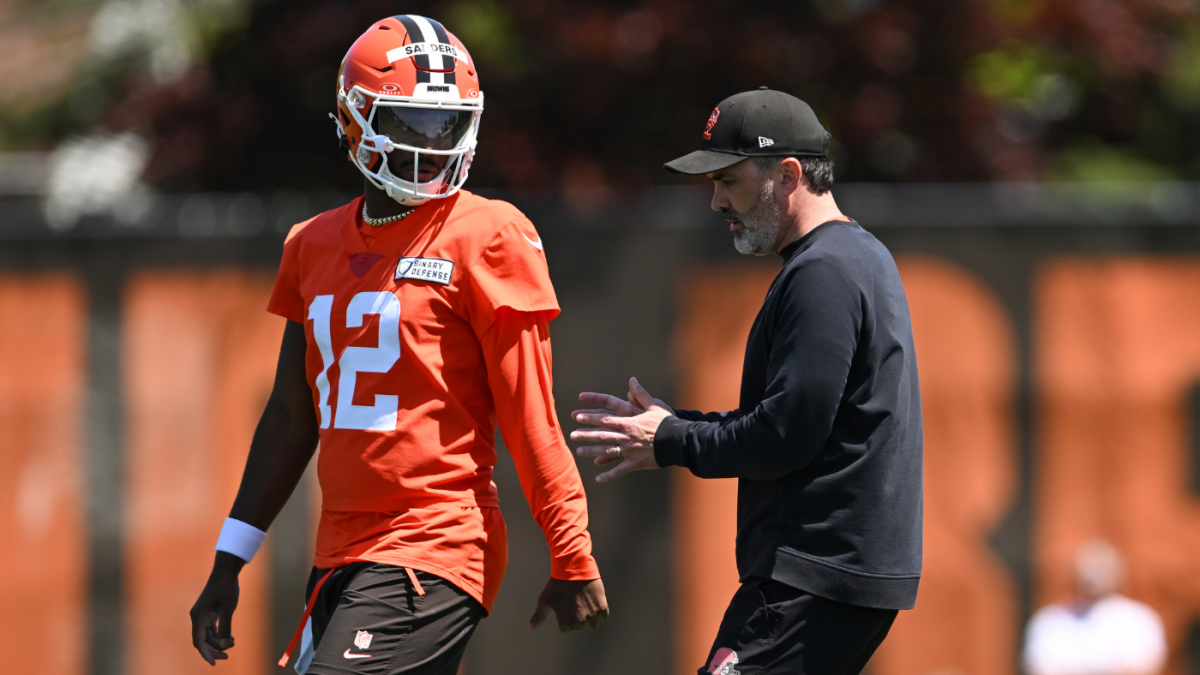Shedeur Sanders and Dillon Gabriel: Navigating the Browns’ Dual Quarterback Strategy
Draft Day Decisions and Their Implications
The Cleveland Browns’ decision to draft two rookie quarterbacks in the 2025 NFL draft marks a distinctive and strategic approach to a position crucial to any football team’s success. Selecting Dillon Gabriel in the third round and Shedeur Sanders in the fifth surprised many, mainly because of Sanders’ fall from earlier projections. Several factors contributed to this unexpected slide, including concerns about pre-draft behavior and a preference among teams for what they considered “safer” quarterback prospects.
From the Browns’ perspective, Gabriel was perceived as a reliable and polished candidate, expected to handle immediate or near-term responsibilities as a potential starter. On the other hand, Sanders represented a high-upside value selection—a player whose talent might exceed his draft position. This dual investment speaks to the Browns’ intent to balance immediate readiness with long-term developmental potential, crafting a quarterback room designed for depth and flexibility rather than relying solely on one choice.
Building Chemistry Amid Competition
The dynamic between Sanders and Gabriel transcends the typical rivalry often seen among quarterbacks competing for a starting role. Rather than fostering division, both players have demonstrated professionalism and mutual respect. Sanders’ candid comments reflect that competition is part of growth, not a personal contest, while Gabriel’s openness to external comparisons helps maintain a united front.
This healthy competitive atmosphere has gained attention during rookie minicamps, where Sanders’ flashes of sharpness challenged expectations tied to his later draft status. Such interplay drives improvement for both athletes and is a valuable asset for team cohesion, preventing the zero-sum mentality usually associated with positional battles and instead emphasizing collective advancement.
Contrasting Skill Sets and Developmental Trajectories
When analyzing their potential, Gabriel and Sanders contribute complementary strengths. Gabriel offers what many consider a “safe” pick: solid throwing mechanics, consistent decision-making, and a polished style ideally suited for near-term stability at quarterback. His reliable performance aligns with the Browns’ need for dependability in a key leadership position on offense.
Conversely, Sanders embodies a higher ceiling, with traits like acute accuracy and advanced football intelligence that signal promising long-term growth. Despite the longer path possibly required for him to claim a starting role, his rookie contract and organizational faith suggest the Browns envision him as a cornerstone for the future.
The coaching staff intends to observe these qualities closely during training camp and preseason, understanding that each player’s distinctive assets could either define a clear starter or lead to an innovative quarterback-by-committee approach. This tactical openness increases the Browns’ options as they seek to optimize offensive execution.
Strategic Rationale Behind Two Rookie Quarterbacks
Rare in the NFL, the Browns’ dual quarterback selection illustrates a modern strategy of hedging bets and fostering internal competition. By bringing both Gabriel and Sanders into the fold simultaneously, the team mitigates risks associated with injury, performance variability, and uncertainty inherent in rookie development.
Supplementing this setup are veterans like Kenny Pickett and the recovering Deshaun Watson, whose presence offers mentorship and a buffer against the pressures of immediate starting responsibilities. This layered structure cultivates an environment where rookies can learn and grow at an appropriate pace without the burden of instant scrutiny, while also motivating them to push each other for advancement.
Early Signs and Future Outlook
Initial reports indicate positive locker room integration for Sanders, which helps quell concerns about his draft-day slide and accelerates his comfort with the professional game’s demands. Though Gabriel initially appeared to hold the edge as frontrunner, Sanders’ rookie camp performances have sparked debates about the quarterback competition’s direction.
Head coach Kevin Stefanski’s measured approach to managing this competition—highlighted by balanced practice reps and cautious media statements—reflects an organizational commitment to fair evaluation and patient development rather than rushing either rookie into a significant role prematurely.
With both quarterbacks bringing notable college accuracy and promise, the Browns appear well-positioned to leverage their talents. Their unfolding rivalry will not only influence who ultimately leads the offense but also shape Cleveland’s identity in a league where quarterback play can define franchise fortunes.
Conclusion: A Quarterback Narrative Worth Following
The Browns’ investment in Dillon Gabriel and Shedeur Sanders has crafted a compelling narrative centered on contrasting prospects, competitive spirit, and strategic foresight. Sanders’ unexpected draft slide and perseverance evoke a story of resilience and potential, while Gabriel’s earlier selection offers stability and polished reliability.
Together, they embody a forward-thinking experiment that could spawn either a singular franchise quarterback or a collaborative, multifaceted quarterback room. The success of this approach depends on harnessing their talents harmoniously, maintaining locker room unity, and nurturing leadership qualities that resonate beyond individual ambition.
For observers and fans alike, the Browns’ quarterback saga provides an engaging saga blending talent, rivalry, and opportunity—one that promises to shape the team’s trajectory in the seasons ahead.











